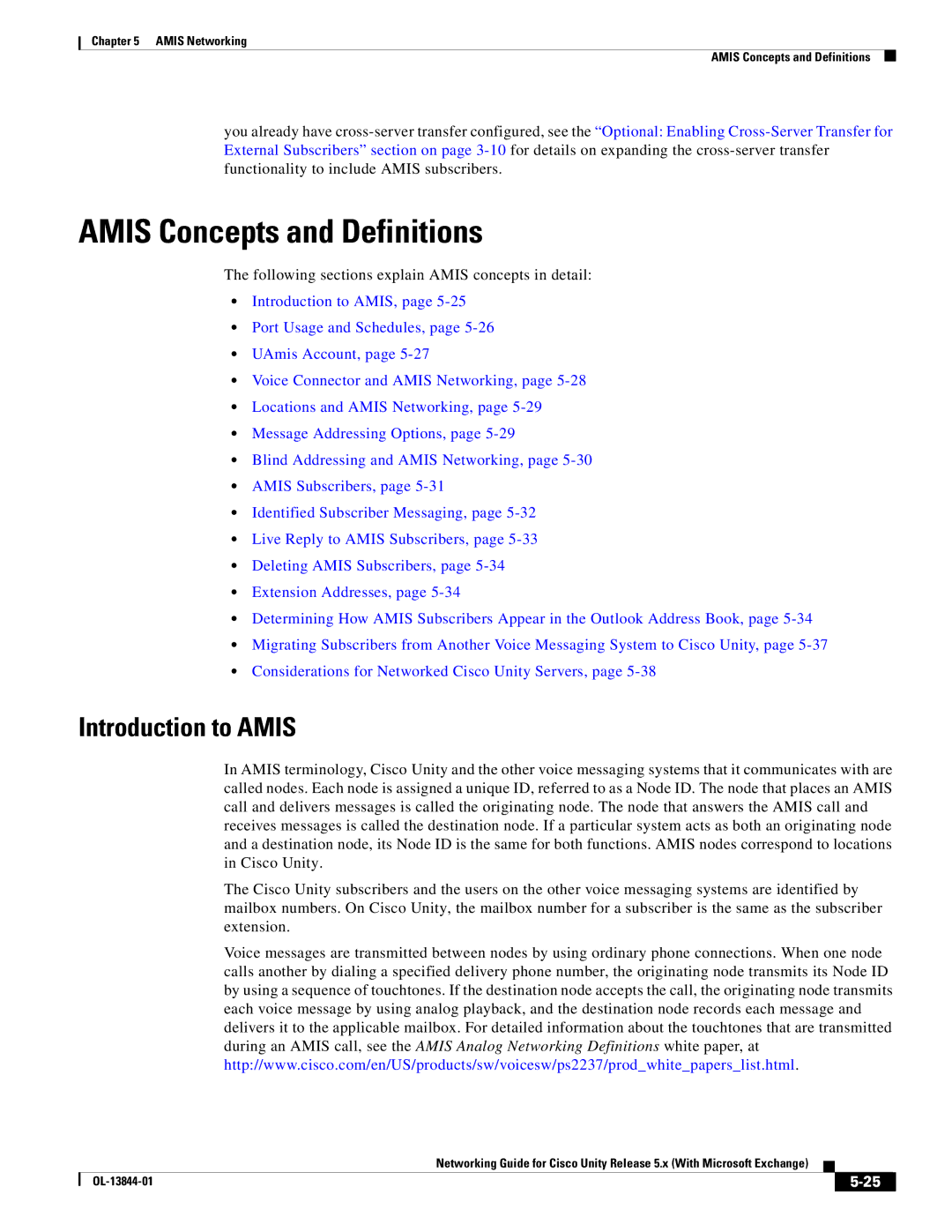Chapter 5 AMIS Networking
AMIS Concepts and Definitions
you already have
AMIS Concepts and Definitions
The following sections explain AMIS concepts in detail:
•Introduction to AMIS, page
•Port Usage and Schedules, page
•UAmis Account, page
•Voice Connector and AMIS Networking, page
•Locations and AMIS Networking, page
•Message Addressing Options, page
•Blind Addressing and AMIS Networking, page
•AMIS Subscribers, page
•Identified Subscriber Messaging, page
•Live Reply to AMIS Subscribers, page
•Deleting AMIS Subscribers, page
•Extension Addresses, page
•Determining How AMIS Subscribers Appear in the Outlook Address Book, page
•Migrating Subscribers from Another Voice Messaging System to Cisco Unity, page
•Considerations for Networked Cisco Unity Servers, page
Introduction to AMIS
In AMIS terminology, Cisco Unity and the other voice messaging systems that it communicates with are called nodes. Each node is assigned a unique ID, referred to as a Node ID. The node that places an AMIS call and delivers messages is called the originating node. The node that answers the AMIS call and receives messages is called the destination node. If a particular system acts as both an originating node and a destination node, its Node ID is the same for both functions. AMIS nodes correspond to locations in Cisco Unity.
The Cisco Unity subscribers and the users on the other voice messaging systems are identified by mailbox numbers. On Cisco Unity, the mailbox number for a subscriber is the same as the subscriber extension.
Voice messages are transmitted between nodes by using ordinary phone connections. When one node calls another by dialing a specified delivery phone number, the originating node transmits its Node ID by using a sequence of touchtones. If the destination node accepts the call, the originating node transmits each voice message by using analog playback, and the destination node records each message and delivers it to the applicable mailbox. For detailed information about the touchtones that are transmitted during an AMIS call, see the AMIS Analog Networking Definitions white paper, at http://www.cisco.com/en/US/products/sw/voicesw/ps2237/prod_white_papers_list.html.
|
| Networking Guide for Cisco Unity Release 5.x (With Microsoft Exchange) |
|
| |
|
|
| |||
|
|
|
|
| |
|
|
|
| ||
